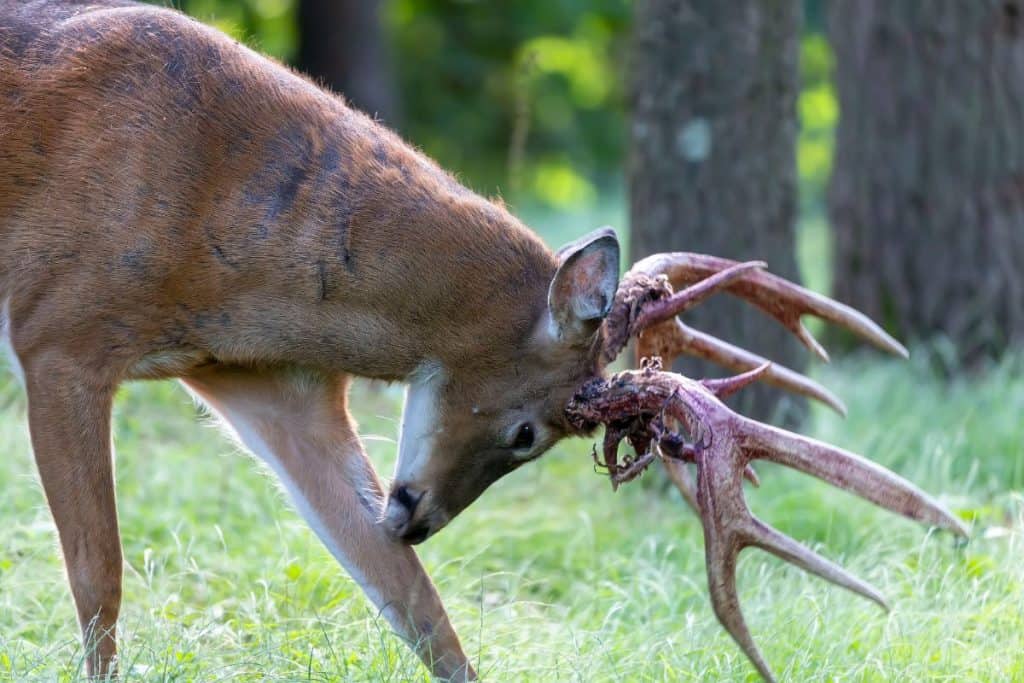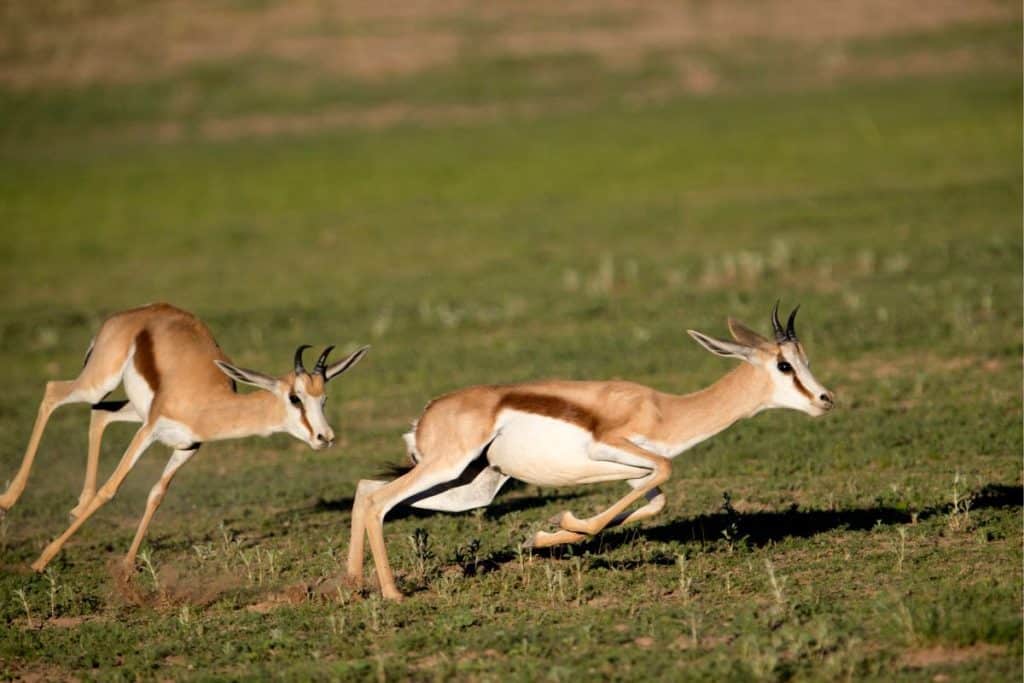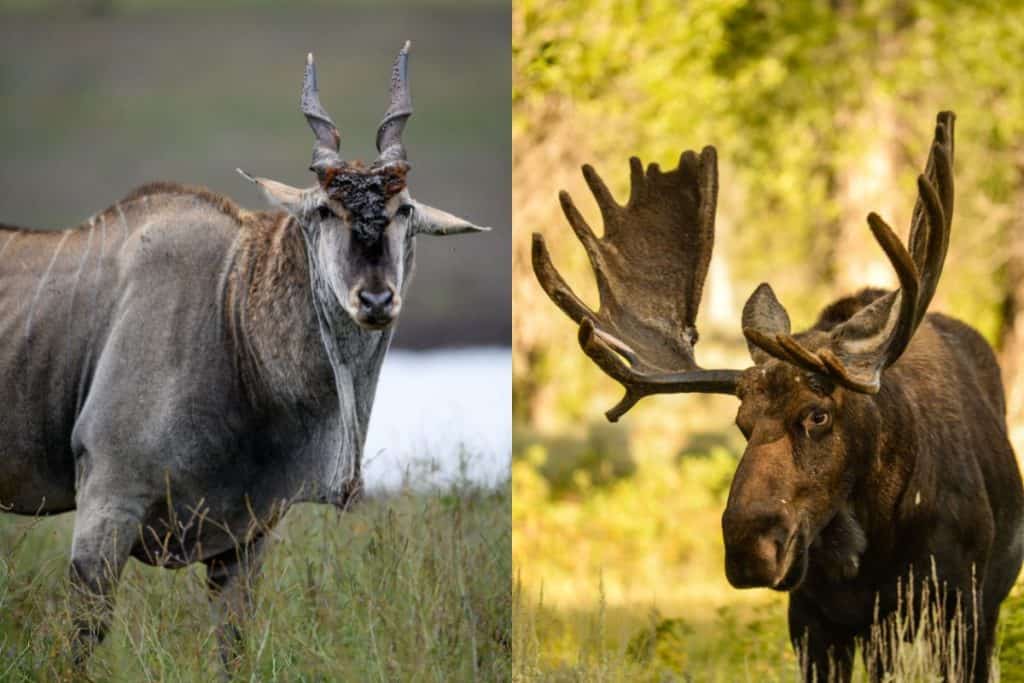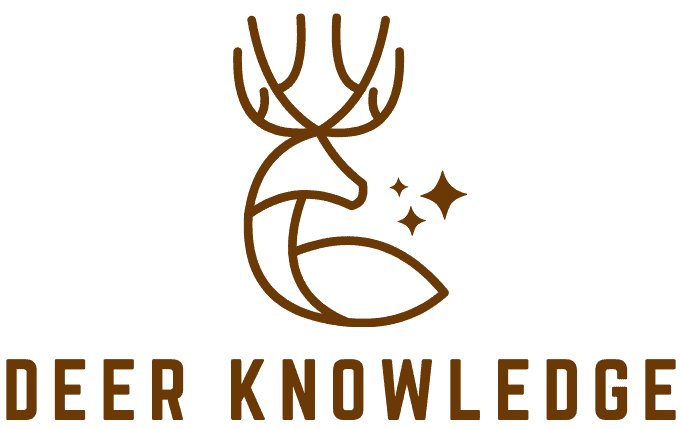To the casual observer, deer and antelope may look similar, but several key differences exist. While you might well have thought that antelope was a species of deer, this umbrella term actually refers to a totally different family of animals, including springboks, gazelles, and hartebeests.
In this deer vs antelope comparison, we’ll examine the critical differences between these two types of large herbivores.
What Are the Key Differences Between Deer and Antelope?
As mentioned, there are numerous differentiating factors between both species. Let’s start with the genealogical differences.
Deer and Antelopes Are Two Distinct Families of Animals
While they may be similar in appearance, antelope and deer don’t belong in the same genealogical family. Deer belong to the Cervidae family, covering all 62 species, including white-tail deer, sika deer, and even larger mammals such as elk and moose.
By contrast, antelopes belong to the Bovidae family, which includes cattle, sheep, and goats. That said, antelope form their own distinct subset of this family, with their species including impalas, gazelles, springboks, oryx, and waterbucks, to name just a few of the 91 species.
Deer Have Deciduous Antlers, While Antelope Have Permanent Horns
Aside from their genealogical differences, their headgear may be both species’ most significant differentiating feature. Deer boast deciduous antlers (meaning they fall off and grow back each year).
These antlers are made up of vascular, spongy tissue known as velvet that deer scratch off in the spring to reveal new bone growth underneath. Once the velvet has been removed, the antler bones harden for mating (rutting) season. When the mating season is over, the antlers are shed again, and the cycle begins anew.
By contrast, antelope have permanent horns made up of living bone that continues to grow throughout their lives. They can be spiraled, curved, or straight in shape – depending on their species – but they are always present, and they never branch (like antlers do).
Another point worth making regarding differences in headgear is that both male and female antelope grow horns (since they are a defense mechanism against predators). In comparison, deer antlers are only grown by male deer for mating purposes (the only female deer species with antlers is reindeer).

Deer Are Crepuscular, Whereas Antelope Are Diurnal
Another significant differentiation between these two animal species is their daily routines. Deer are crepuscular creatures, meaning they are most active during the hours around dawn and dusk. The reason they are most active during this time is primarily to avoid predators who tend to hunt in the daylight or nighttime hours.
By contrast, antelope are more like us humans, exhibiting diurnal activity patterns. In short, diurnal animals are active during daylight hours and bed down for the night. If you were to hunt antelope, there would be little advantage in getting up in the early hours of the morning. In contrast, deer hunters are often up before dawn to give themselves the best chance of spotting a target.
Deer Roam Most of the Earth, Antelope Stick to Africa and Eurasia
The geographic spread of deer is noticeably more comprehensive than that of their antelope counterparts.
Indeed, deer inhabit a wide variety of habitats across the world. Notable examples include red deer in the Scottish Highlands, moose in Canada’s Arctic regions, and reindeer inhabiting areas of Scandinavia and Siberia.
The only two continents without any deer species present are Antarctica and Australia.
Meanwhile, antelope species such as elands and gemsboks (both popular safari game in places like Botswana) only inhabit certain areas of Africa and Eurasia.
The differences in geographical distribution can partly be explained by the broad spectrum of adaptions deer exhibit to help them survive in different climates. By contrast, antelope tend to prefer warmer environments (though that’s not the case for all antelope species).
Deer Lack the Speed and Stamina of Antelope
While deer are no slouches, being hunted by animals such as lions, cheetahs, and African wild dogs means antelope have developed some impressive defenses of their own – namely, their speed.
Some species of antelope can reach speeds of up to 55 mph and can run at speeds of 25+ mph for more than an hour to help them wear out and evade predators such as cheetahs.
Deer, by contrast, often hit between 30 and 35 mph but can only run for short distances at those speeds.
So, with their differences covered – let’s take a quick look at how these animal species are similar.

Deer vs Antelope: How Are They Similar?
Despite the distinct differences between these two animal groups, some similarities are worth mentioning.
They Are Both Ruminant Herbivores
Both antelope and deer eat similar, plant-based diets. While antelope graze on grass, plant shoots, and other plants, deer eat nuts, fruits, acorns, and other forms of browse.
They are also both ruminants, meaning they chew their food multiple times before digesting it. They both have four-chambered stomachs packed with microorganisms to aid in this process.
They Exhibit Similar Physical Appearances
Antelope are often thought of as sharing the same family as deer because they both have similarities in their physical appearances.
They both have forms of headgear, similar body shapes, and are both even-toed ungulates. So it’s no wonder many people think of these two animal groups as one and the same.
They Share Similar Lifespans and Weight Distributions
When it comes to average lifespans, deer and antelope are very similar. Deer tend to live between 10 and 20 years, while antelope live between 10 and 25 years.
Across the various species, height and weight profiles are also similar. While antelope tend to have a higher bottom end (40 kg) on the weight spectrum than deer (10 kg), the top-end species of each, Giant Elands and Moose, are very similar (650 kg – 700 kg).

Deer vs Antelope – Recap
As you can see, there are certainly more differences than initially meets the eye when comparing these two animal groups.
Of course, that isn’t to say that there aren’t some similarities. While deer and antelope belong to distinct families of animals, they both exhibit similar characteristics, including herbivorous diets and ruminant digestive systems.
However, their differences are quite stark, including their headgear, geographical spread, and speed.
Hopefully, you now know a little more about the differences between a deer and an antelope and won’t have any issues distinguishing one from the other in the future.

